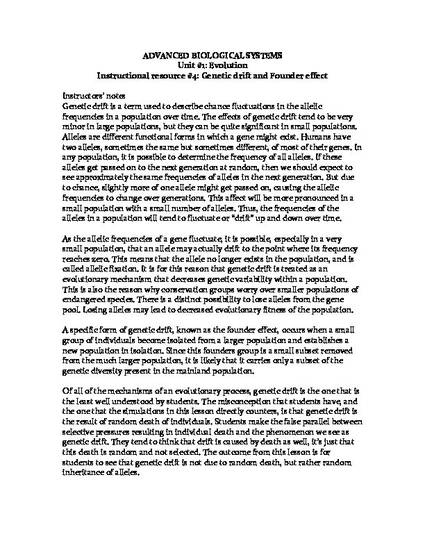
Genetic drift is a term used to describe chance fluctuations in the allelic frequencies in a population over time. The effects of genetic drift tend to be very minor in large populations, but they can be quite significant in small populations. Alleles are different functional forms in which a gene might exist. Humans have two alleles, sometimes the same but sometimes different, of most of their genes. In any population, it is possible to determine the frequency of all alleles. If these alleles get passed on to the next generation at random, then we should expect to see approximately the same frequencies of alleles in the next generation. But due to chance, slightly more of one allele might get passed on, causing the allelic frequencies to change over generations. This affect will be more pronounced in a small population with a small number of alleles. Thus, the frequencies of the alleles in a population will tend to fluctuate or “drift” up and down over time.
Available at: http://works.bepress.com/sarah-oleary-driscoll/63/
